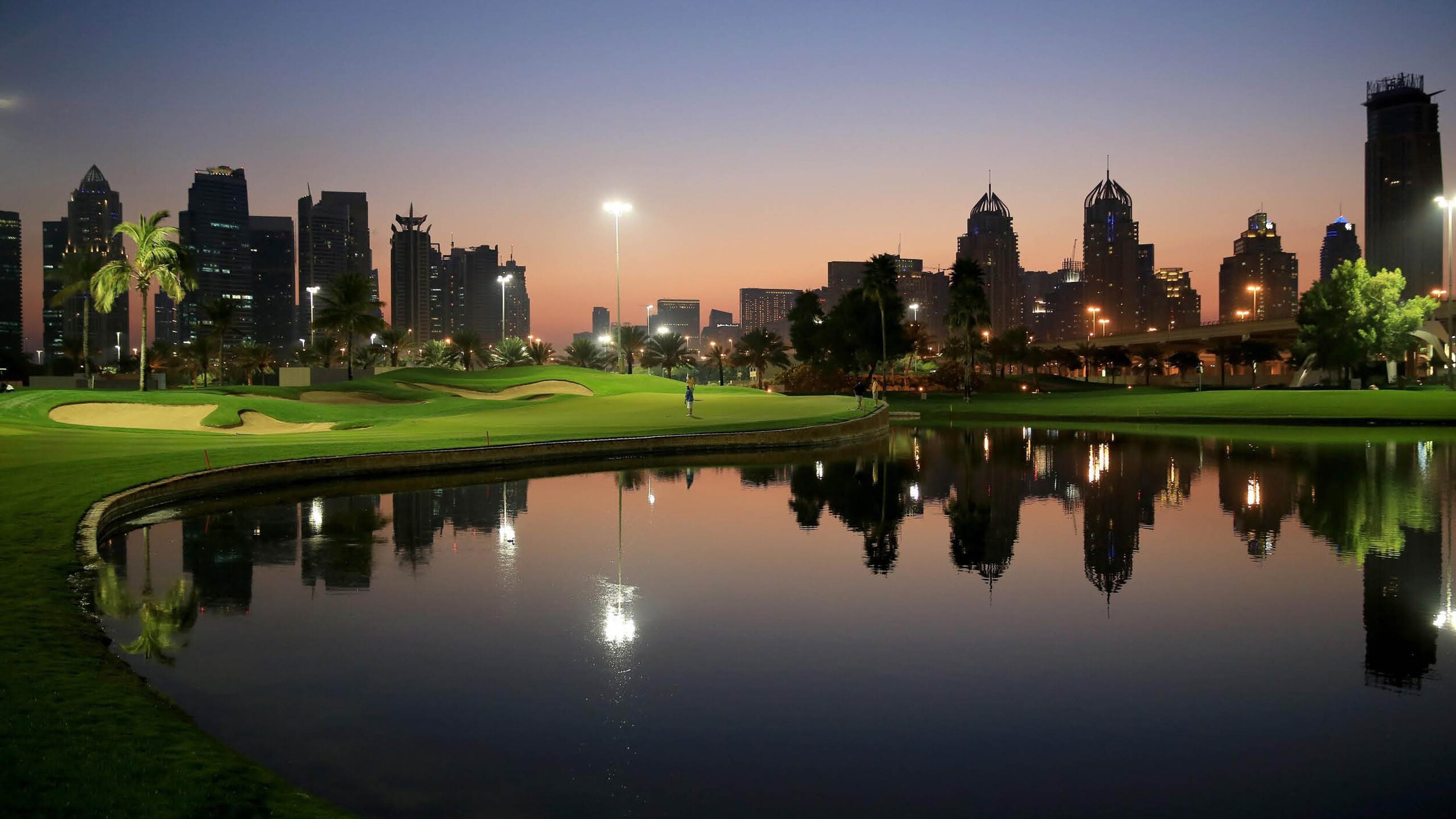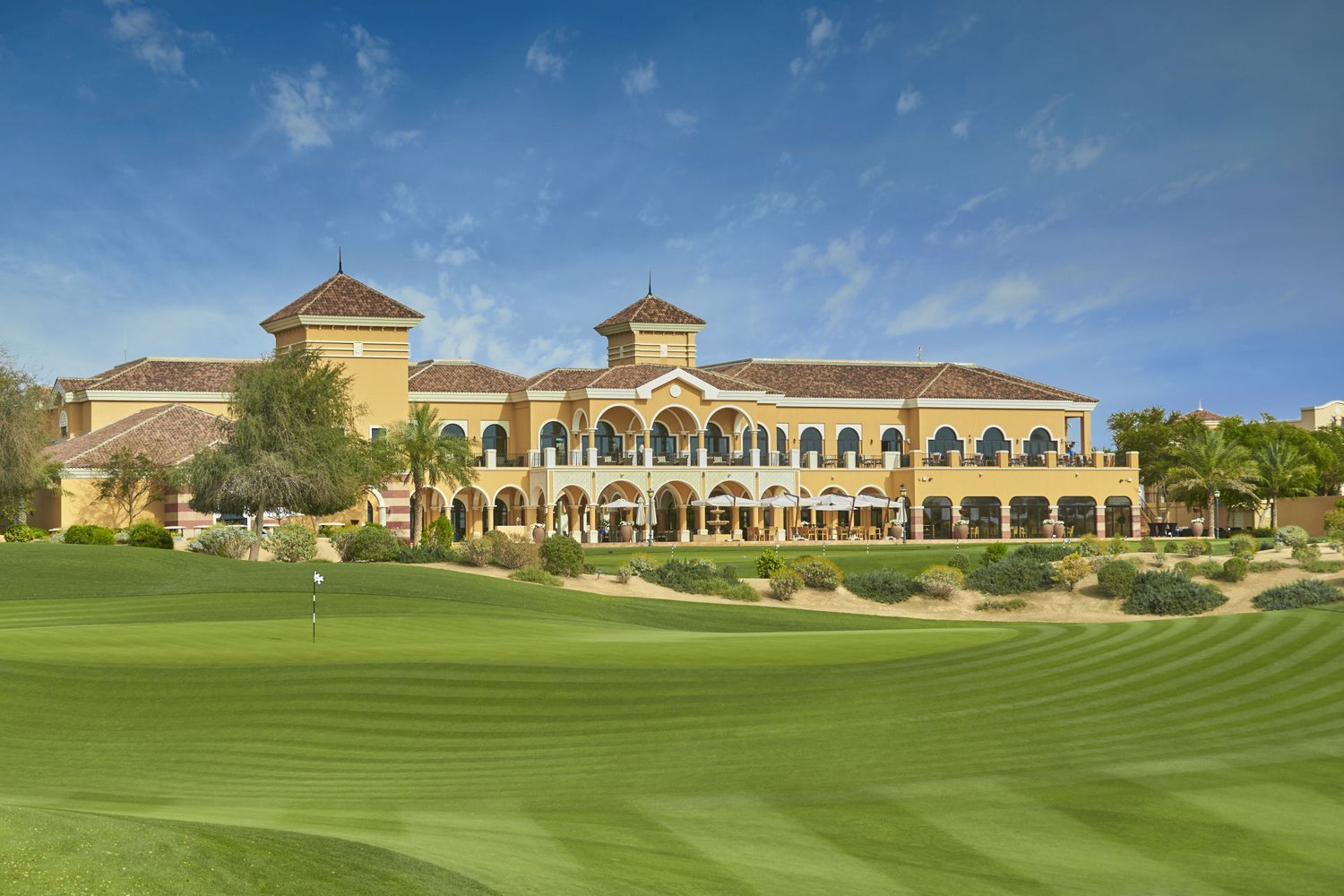10 superstar architects that built Dubai golf
Ernie Els, Sir Nick Faldo, Greg Norman, Colin Montgomerie, Ian Baker-Finch, Thomas Bjorn … it reads like a who’s who of 1990s golf. In fact, it is a list of the men who have laid out courses in Dubai, says Chris Bertrand
Some of the change to the landscape surrounding Emirates Golf Club
Karl Litten / Emirates (Majlis) & Dubai Creek
American Karl Litten started Dubai’s golf revolution when he designed the Majlis. Three decades on, it very possibly remains the premier venue in the emirate. The annual host of the Dubai Desert Classic was designed with an emphasis on traditional architectural values as opposed to a more explosive American style seen elsewhere in Dubai.
Its location on the edge of downtown Dubai gives it the Insta-worthy skyscraper backgrounds – not least the iconic 8th. There’s a thrilling par-5 climax over water too, played towards the distinctive clubhouse that mimics bedouin tents.
After his success with Emirates’ Majlis, Karl Litten was asked to create a course in a spectacular location overlooking the creek and marina.
Opened in January 1993, Litten included the creek in four holes and added several lakes for good measure. The result is a indubitably dramatic climax which is arguably the best stretch of golf in Dubai.
Gil Hanse / Trump International
American Gil Hanse, one of his generation’s most feted architects, has produced something very different to anything else in Dubai here. Trump International has no trees and only one water hazard – which affects the 9th and 18th – and is instead characterised visually by sandy waste areas alongside fairways and in front of tees.
It frequently looks epic, in the manner of Pinehurst No.2 – one of America’s revered courses. Short grass is the trademark here – there is no rough. Instead, tees run seamlessly into fairways, which in turn flow uninterrupted into greens.
There is as much width off the tee and as much emphasis of angle of approach as Hanse incorporated at his famed Scottish links Castle Stuart.
Gary Johnston / Dubai Hills
This is the most recent addition to Dubai’s portfolio and was created by European Golf Design, the architecture arm of the European Tour.
Scotsman Gary Johnston was the principal designer and he has emphasised the in-vogue philosophy of generous fairways to help everyone get the ball in play while testing the golfer closer to the green.
Opened in 2019, it is interesting and fun, with plenty of variety to the holes, with a particularly strong front nine.
The 5th is a highlight, a straight-up-the-hill par 5 with the Burj Khalifa in the background - a wonderful sight when played early morning or late afternoon with the tower catching the sunrise or sunset light.
Thomas Bjorn / Dubai Creek Redesign
Ryder Cup captain Thomas Bjorn’s redesigned Dubai Creek in association with European Golf Design and included a tee that floats above the water of the marina and the revision stiffened the challenge further – especially when the wind blows up ‘the channel’ in the afternoon.
The course has hosted two Dubai Desert Classics and the clubhouse is notable, its design mirroring the sails of the Arab dhow.
Greg Norman / Earth & Fire Courses, Jumeirah Golf Estates
Greg Norman is one of the most charismatic players golf has ever seen, and he has proved as adept at creating memorable courses as he was at dominating them in his prime.
The Earth is the No.1 course at Jumeirah Golf Estates and is home to the European Tour’s annual season-ending DP World Tour Championship.
It is the ultimate big-budget championship course; expect rolling fairways framed by huge white-sand bunkers and deep-red ochre borders.
Long, exacting and with numerous elevated greens, the finish is teak tough. Dubai’s Carnoustie.
The Fire is widely regarded as the second course at JGE but it was also designed by Norman and many actually prefer it to the Earth.
It has been steadily improved since opening in 2010 and the course hosted it’s first DP World Championship event in 2020.
Fairway bunkers have been added to further stiffen up its challenge as it is easier than the Earth around the greens. A very good modern test by the former world No.1 player.
Nick Faldo / Emirates GC
Regarded as the No.2 course at Emirates GC, it was opened as nine-holer in 1996 as ‘The Wadi’ – the Arabic word for ‘valley’.
However Sir Nick Faldo extended and overhauled it nine years later and it is a very strong sister course to the Majlis.
A wadi runs the length of the course and is in play. Also expect more movement slope on its greens compared to the Majlis, but the same skyscraper backgrounds.
It is also Dubai’s only 18-hole floodlight course.
Colin Montgomerie / Address Montgomerie
The Montgomerie is playable, forgiving and frankly just good fun. Colin Montgomerie’s design, in association with Desmond Muirhead (an architect known for his eccentric style), gives you the iconic backdrops of downtown Dubai and Dubai Marina on lots of holes – possibly even more so more than at Emirates GC – but in a cocoon of verdant relaxation.
In fact, set within 265 acres of manicured fairways lined by sand, landscaped gardens and lakes, it is so easy to forget you are in the heart of one of the world’s most vibrant cities.
The fairways are enjoyably wide but 14 lakes do provide frequent alarm – not least on the island par-3 13th, which has a 360˚ teeing ground, and all the way down the last.
Ernie Els / The Els
South African icon Ernie Els’ creation is notable for its large undulating greens, and also the condition of them. They are widely regarded as the most immaculate surfaces in Dubai.
The two-time Open champion’s design also incorporates fairly generous, undulating fairways lined by wispy rough that waves in the wind but very little in the way of trees and foliage.
It is though, mostly about the greens; they are the most exacting in Dubai because of their slopes, their size and their speed. The surrounding run-offs make chipping a proper test too.
Ian Baker-Finch / Arabian Ranches
The 1991 Open champion Ian Baker-Finch is the man behind Arabian Ranches and it has never been in better shape after all 18 greens were replaced in 2019.
It has a ‘linksy’ look as gently undulating fairways meander between sandy waste areas.
When Baker-Finch – assisted by Nicklaus Design – opened in 2004, it was one of the emirate’s toughest courses by virtue of the firm paspalum grass bouncing your ball into the native shrubs and bushes that lined the fairways.
Much of that has now been cleaned out and it is an invigorating, authentic desert challenge.
Peter Harradine / Jebel Ali & Meydan
Dubai-based Peter Harradine, whose father and grandfather were also designers, laid out this nine-hole course 30 minutes outside downtown Dubai.
The charismatic Harradine – who designed Tour venue Abu Dhabi Golf Club – had a limited amount of land to work with, so Jebel Ali has smallish fairways and smallish greens, but is not punishing in terms of length.
It is characterised by shrubs, shallow bunkers and a lake that winds its way into five holes. Everyone from Tiger to Seve to Ernie has played here as it is the official hotel for the Dubai Desert Classic. Peter Harradine designed this fully-floodlit nine-hole course, whose USP is its race course setting.
Very close to downtown with nice views of the race track and the skyline, there is a bit of water and enough trees to provide definition without being penal. But don’t think it is a pushover – the 1st is 663 yards off the tips! The 2nd is a 223-yard par 3 and there are six natural lakes with water in play on every hole.











